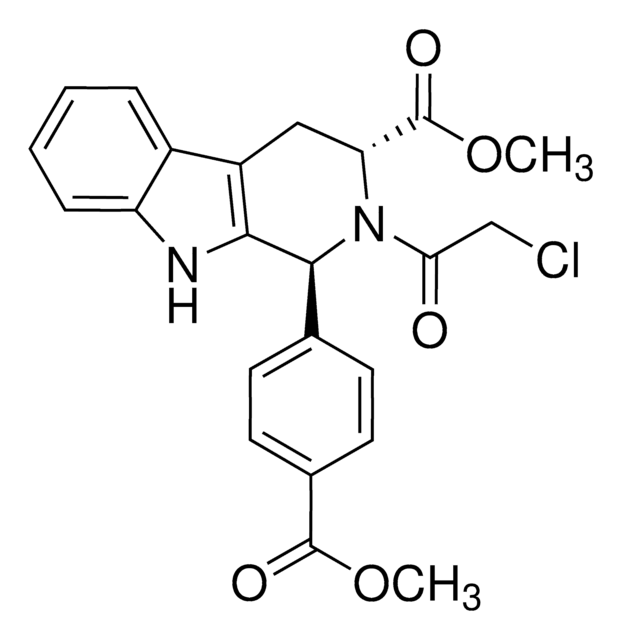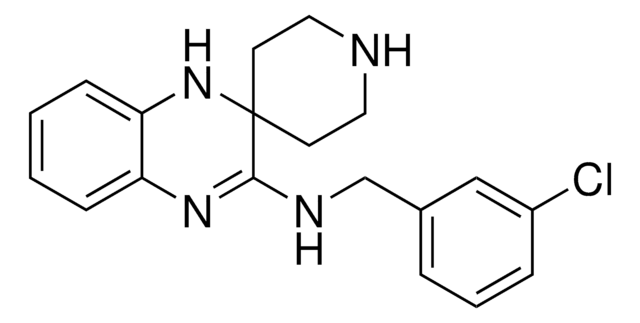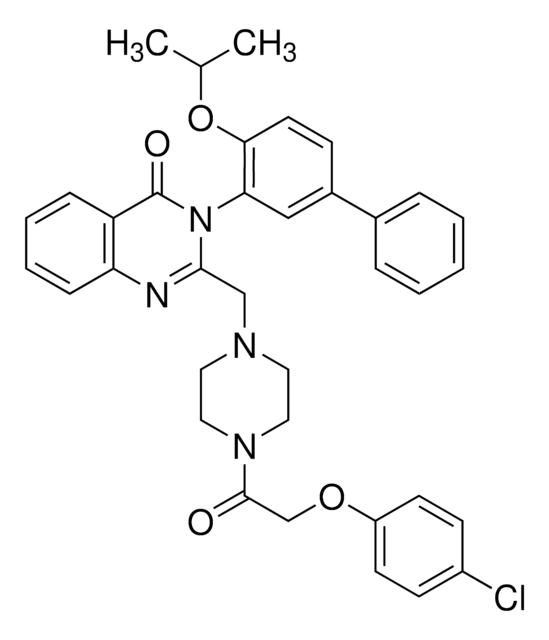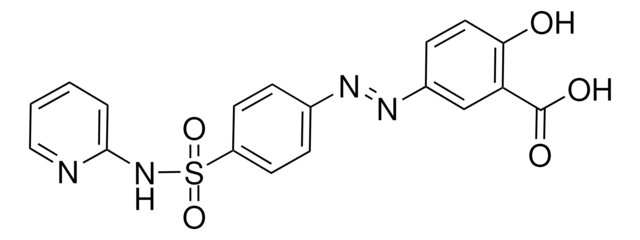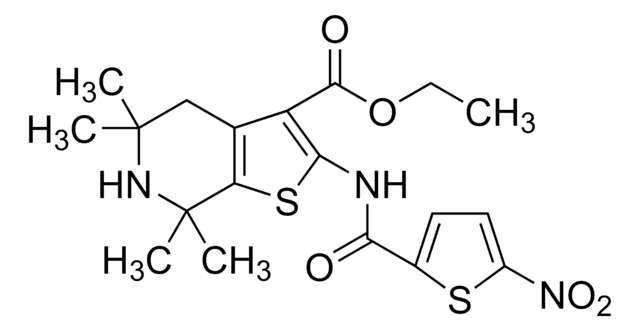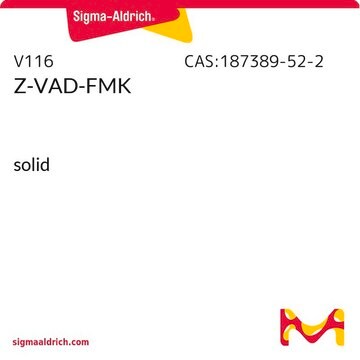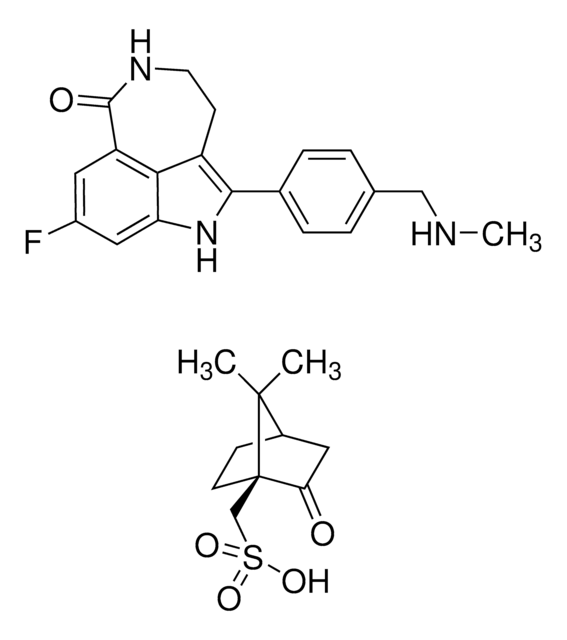おすすめの製品
製品名
エラスティン, ≥98% (HPLC)
アッセイ
≥98% (HPLC)
フォーム
powder
色
white to beige
溶解性
DMSO: 5 mg/mL, clear (warmed)
保管温度
−20°C
SMILES記法
CCOc1ccccc1N2C(=O)c3ccccc3N=C2C(C)N4CCN(CC4)C(=O)COc5ccc(Cl)cc5
InChI
1S/C30H31ClN4O4/c1-3-38-27-11-7-6-10-26(27)35-29(32-25-9-5-4-8-24(25)30(35)37)21(2)33-16-18-34(19-17-33)28(36)20-39-23-14-12-22(31)13-15-23/h4-15,21H,3,16-20H2,1-2H3
InChI Key
BKQFRNYHFIQEKN-UHFFFAOYSA-N
遺伝子情報
human ... hRas(3265)
mouse ... hRas(15461)
rat ... hRas(293621)
詳細
アプリケーション
- 肝星細胞(HSC)内鉄タンパク誘導の陽性対照として
- 鉄タンパク誘導とヒト線維肉腫HT1080細胞のトランスフェリン内在化アッセイ
- 筋肉由来細胞株の鉄タンパク誘導に
生物化学的/生理学的作用
特徴および利点
保管分類コード
11 - Combustible Solids
WGK
WGK 3
引火点(°F)
Not applicable
引火点(℃)
Not applicable
個人用保護具 (PPE)
Eyeshields, Faceshields, Gloves, type P2 (EN 143) respirator cartridges
適用法令
試験研究用途を考慮した関連法令を主に挙げております。化学物質以外については、一部の情報のみ提供しています。 製品を安全かつ合法的に使用することは、使用者の義務です。最新情報により修正される場合があります。WEBの反映には時間を要することがあるため、適宜SDSをご参照ください。
Jan Code
E7781-VAR:
E7781-1MG:
E7781-5MG:
E7781-BULK:
この製品を見ている人はこちらもチェック
ライフサイエンス、有機合成、材料科学、クロマトグラフィー、分析など、あらゆる分野の研究に経験のあるメンバーがおります。.
製品に関するお問い合わせはこちら(テクニカルサービス)

